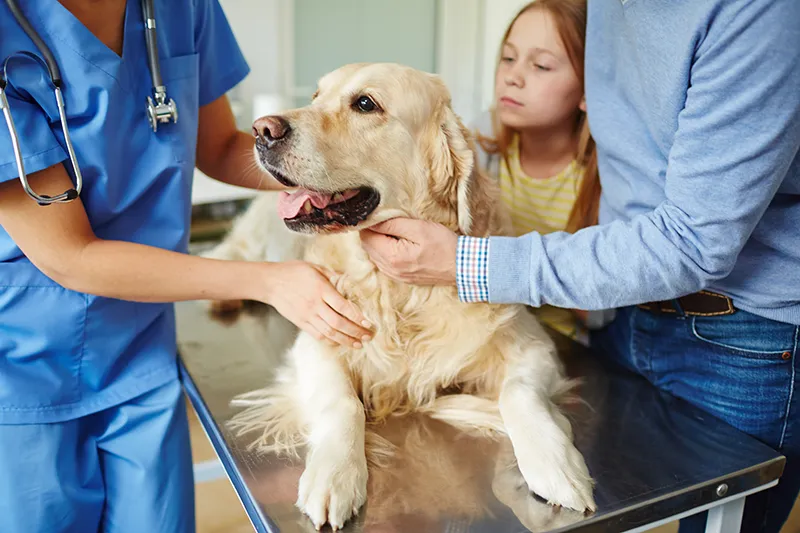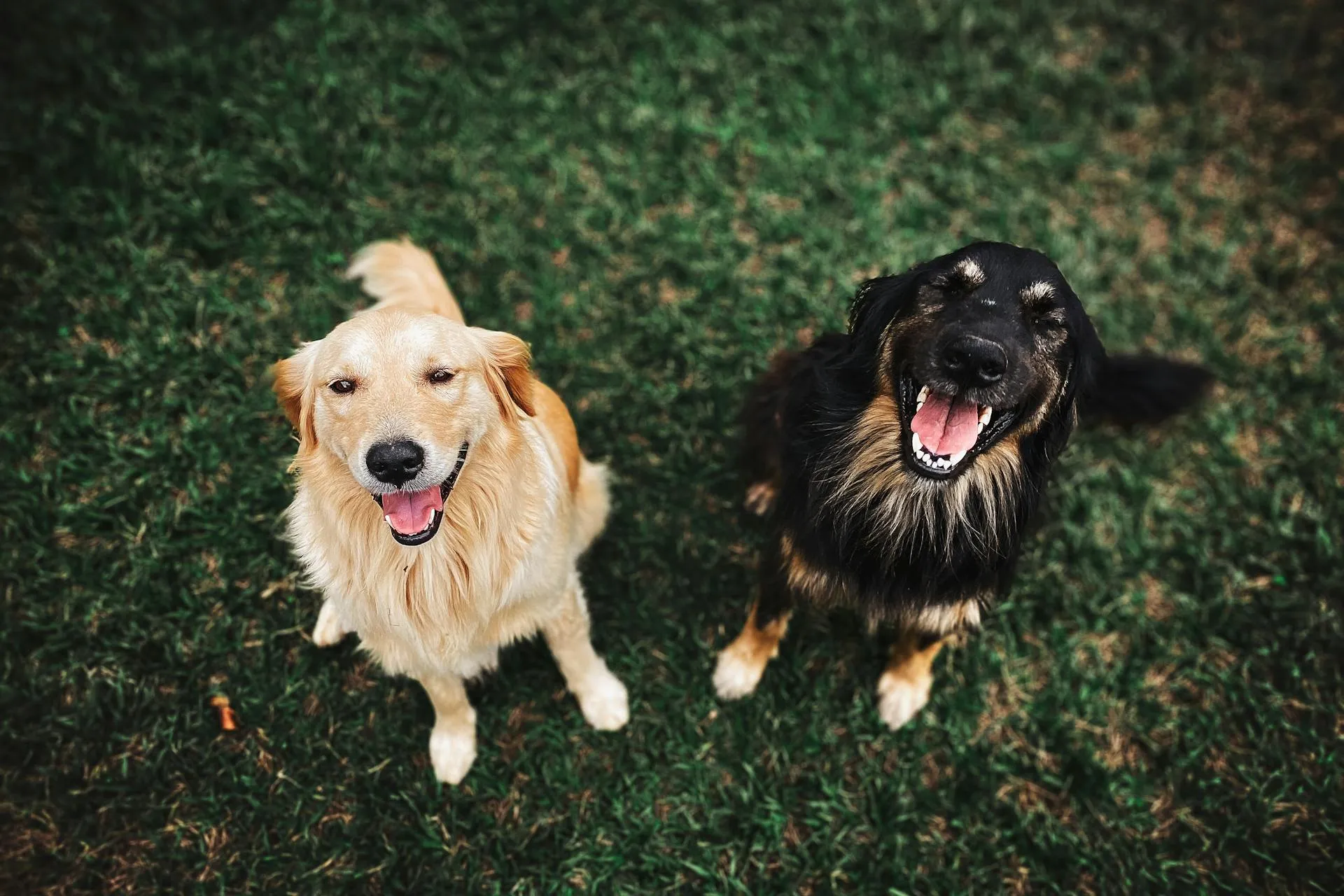As a dog owner, you know how much joy and companionship your dog can bring to your life. However, like any relationship, it’s not always smooth sailing. Dogs, much like humans, can experience behavioral issues that can make life together a bit challenging. At Galena Animal Medical Clinic, your Galena, MD, animal hospital, we understand the complexities of dog behavior and are here to help you identify and address common behavioral issues in your furry friend.
From barking and biting to anxiety and aggression, understanding the root cause of your dog’s behavior is the first step in treating the issue. In this blog, we’ll cover some of the most common behavioral problems in dogs, their potential causes, and how you can correct them to improve your dog’s well-being and your relationship with them.
Common Dog Behavioral Issues
Understanding why your dog behaves a certain way is crucial before taking any corrective action. Dogs can act out for various reasons, such as fear, anxiety, lack of training, or even medical conditions. Let’s take a look at some of the most common behavioral issues dogs may face.
1. Aggression
Aggression in dogs can be frightening and dangerous if not addressed properly. It can manifest in many forms, such as growling, biting, snapping, or lunging at people or other animals.
Causes of Aggression:
- Fear or Anxiety: Aggression often stems from fear or anxiety, particularly in unfamiliar situations or environments.
- Territorial Behavior: Dogs may act aggressively to protect their home, possessions, or family.
- Pain or Illness: Sometimes, aggression is linked to pain or medical conditions, such as arthritis, dental issues, or hormonal imbalances.
- Lack of Socialization: Dogs that have not been properly socialized with people or other animals may become fearful and aggressive.
It’s important to know the signs of aggression in dogs. PetMD has an article about Fido’s body language here. The ASPCA also wrote about canine aggression in this blog, which you can read here.
How to Treat Aggression:
- Seek Professional Help: If your dog is showing signs of aggression, especially toward people, seek help from a professional dog trainer or behaviorist.
- Socialization: Gradual exposure to different environments, people, and other animals can help reduce fear-based aggression.
- Positive Reinforcement: Use positive reinforcement to reward calm and appropriate behavior.
- Medical Checkup: If the aggression seems linked to pain or discomfort, a visit to the vet is crucial to rule out underlying health issues.
2. Separation Anxiety
Dogs that experience separation anxiety tend to become distressed when left alone. This is one of the most common behavioral issues in dogs and can be extremely challenging for both you and your pet.
Signs of Separation Anxiety:
- Excessive Barking or Howling: Dogs with separation anxiety may bark or howl excessively when left alone.
- Destructive Behavior: Chewing furniture, shoes, or other household items is a common sign of anxiety.
- Inappropriate Elimination: Dogs may urinate or defecate inside the house when they’re anxious about being left alone.
- Excessive Drooling or Panting: Dogs with severe anxiety may drool excessively or show signs of excessive panting.
How to Treat Separation Anxiety:
- Gradual Desensitization: Gradually increase the amount of time your dog spends alone to help them adjust. Start with short periods and slowly work up to longer durations.
- Create a Safe Space: Designate a comfortable, quiet area where your dog can feel secure when you’re gone, complete with their bed, toys, and familiar scents.
- Training and Distraction: Provide interactive toys or puzzles to keep your dog occupied while you’re away. This will help redirect their focus from anxiety.
- Consult a Professional: In severe cases, consider working with a dog trainer or a veterinary behaviorist who can provide guidance on managing separation anxiety.
3. Excessive Barking
Barking is a natural form of communication for dogs, but excessive barking can be a problem, especially when it becomes a nuisance to you or your neighbors. Dogs may bark for various reasons, including attention-seeking, boredom, territorial behavior, or excitement.
Causes of Excessive Barking:
- Attention-Seeking: Dogs may bark to get your attention, whether it’s for food, play, or affection.
- Boredom or Lack of Stimulation: Dogs that aren’t getting enough exercise or mental stimulation may bark out of frustration.
- Territorial Behavior: Dogs may bark to alert you to the presence of strangers or animals near your property.
- Separation Anxiety: Dogs left alone for extended periods of time may bark as a result of anxiety.
How to Treat Excessive Barking:
- Ignore the Barking: If your dog is barking for attention, try ignoring the behavior. Reward them with attention when they’re calm.
- Provide Enrichment: Ensure your dog is getting plenty of physical and mental exercise through walks, playtime, and interactive toys.
- Training Commands: Teach your dog a “quiet” command and reward them when they stop barking on command.
- Manage Triggers: If your dog barks at certain triggers, such as visitors or passing cars, use positive reinforcement and desensitization techniques to reduce the behavior.
4. Chewing
Chewing is a natural behavior for dogs, but when it becomes excessive or destructive, it can be a serious issue. Chewing can damage furniture, shoes, and even electrical cords.
Causes of Excessive Chewing:
- Teething: Puppies go through a teething phase, during which they chew on objects to relieve discomfort.
- Boredom: Dogs that are left alone for too long or don’t have enough stimulation may turn to chewing as an outlet for their energy.
- Anxiety or Stress: Dogs with separation anxiety or other stressors may chew to relieve their emotions.
How to Treat Destructive Chewing:
- Provide Chew Toys: Give your dog safe, durable chew toys to satisfy their chewing instincts. Rotate the toys regularly to keep things interesting.
- Training and Redirection: If your dog is chewing on inappropriate objects, gently redirect them to an appropriate chew toy.
- Crate Training: Crate training can help prevent destructive chewing when you’re not home, as it keeps your dog from accessing household items.
5. Jumping on People
Jumping is a common behavioral issue in dogs, especially among puppies. While it may seem like a friendly greeting, jumping can be dangerous and annoying, particularly if your dog is large or excitable.
Causes of Jumping:
- Excitement: Dogs often jump on people when they’re excited to greet them, especially after a long day apart.
- Attention-Seeking: Dogs may learn that jumping on people gets them attention, even if it’s negative attention.
How to Treat Jumping:
- Ignore the Jumping: Don’t give your dog attention when they jump. Instead, turn away or calmly ask them to sit before acknowledging them.
- Reward Calm Behavior: Only reward your dog when they greet you calmly by sitting or standing. This will teach them that calm behavior results in positive attention.
- Consistent Commands: Use a consistent “off” or “down” command when your dog jumps on people, and reward them when they comply.
Frequently Asked Questions
1. Can I stop my dog’s behavior problems without a trainer?
Some mild behavioral issues can be managed at home with consistent training, but for more severe problems, such as aggression or anxiety, it’s best to seek the help of a professional trainer or behaviorist.
2. How long will it take to correct my dog’s behavior?
Behavior modification takes time and consistency. Some issues may take a few weeks to address, while others may require ongoing training and patience.
3. What are the signs that my dog is stressed?
Signs of stress in dogs include excessive panting, pacing, drooling, changes in appetite, and destructive behavior.
4. How can I prevent behavioral problems in my dog?
Prevention starts with proper training, socialization, and providing your dog with plenty of mental and physical stimulation. Early intervention can also help prevent the development of problematic behaviors.
Making sure your dog is getting enough play and exercise will go a long way. Click here for our blog on playing with Fido.
Schedule An Appointment At Our Galena, MD Pet Clinic
At Galena Animal Medical Clinic, your Galena, MD, animal hospital, we understand the importance of addressing behavioral problems early on. By recognizing the signs of common dog behavior issues and implementing the right treatment methods, you can improve your dog’s quality of life and strengthen your bond. Remember, patience and consistency are key when working with your dog on behavioral issues.
If you need further guidance or assistance in managing your dog’s behavior, don’t hesitate to reach out to our team. We’re here to help!
Click here to visit our Service page and find out more about our clinic and the animals we treat. You can also go here to learn more about our Critical Care services, or go here to learn more about our Exotic Pet care offerings.
This blog is meant to be informational only. Always consult with your veterinarian for the right medical advice, diagnosis, or treatment plan for your pet and follow their advice.







!Social Media Icons